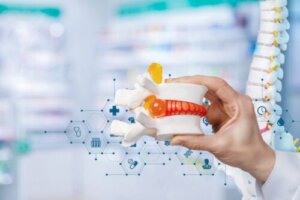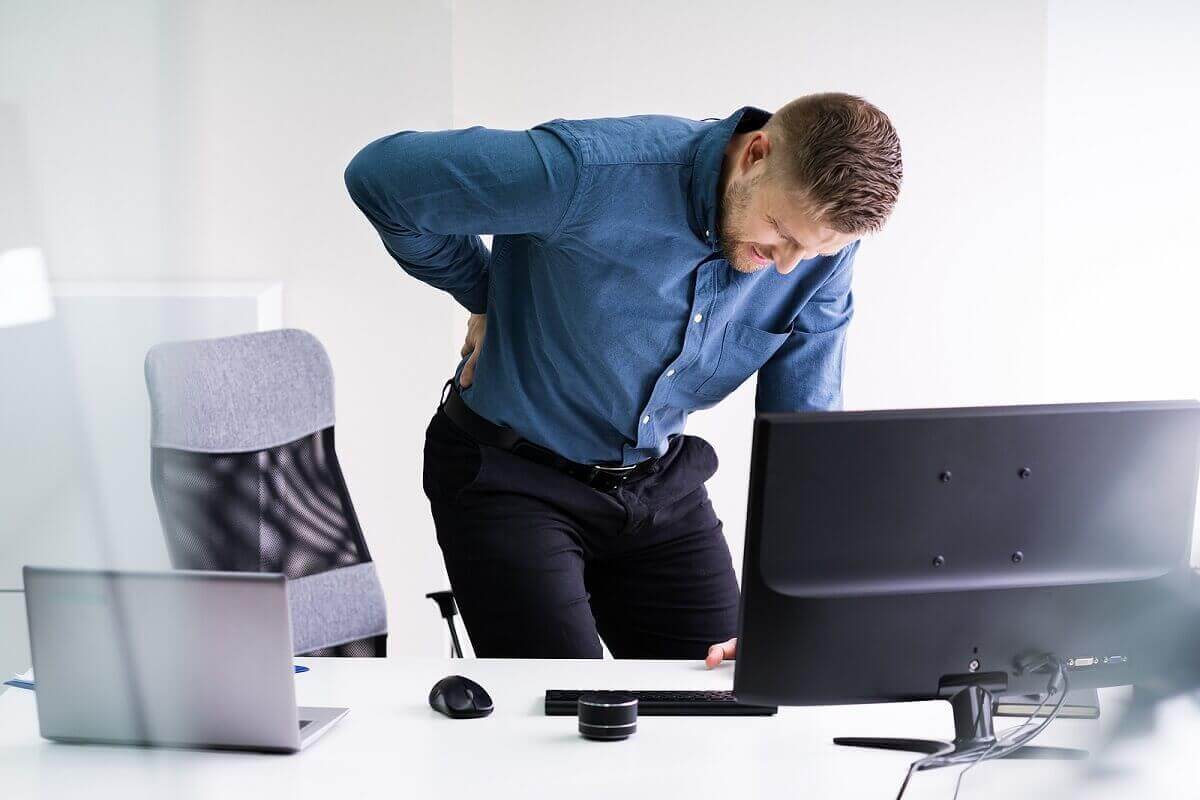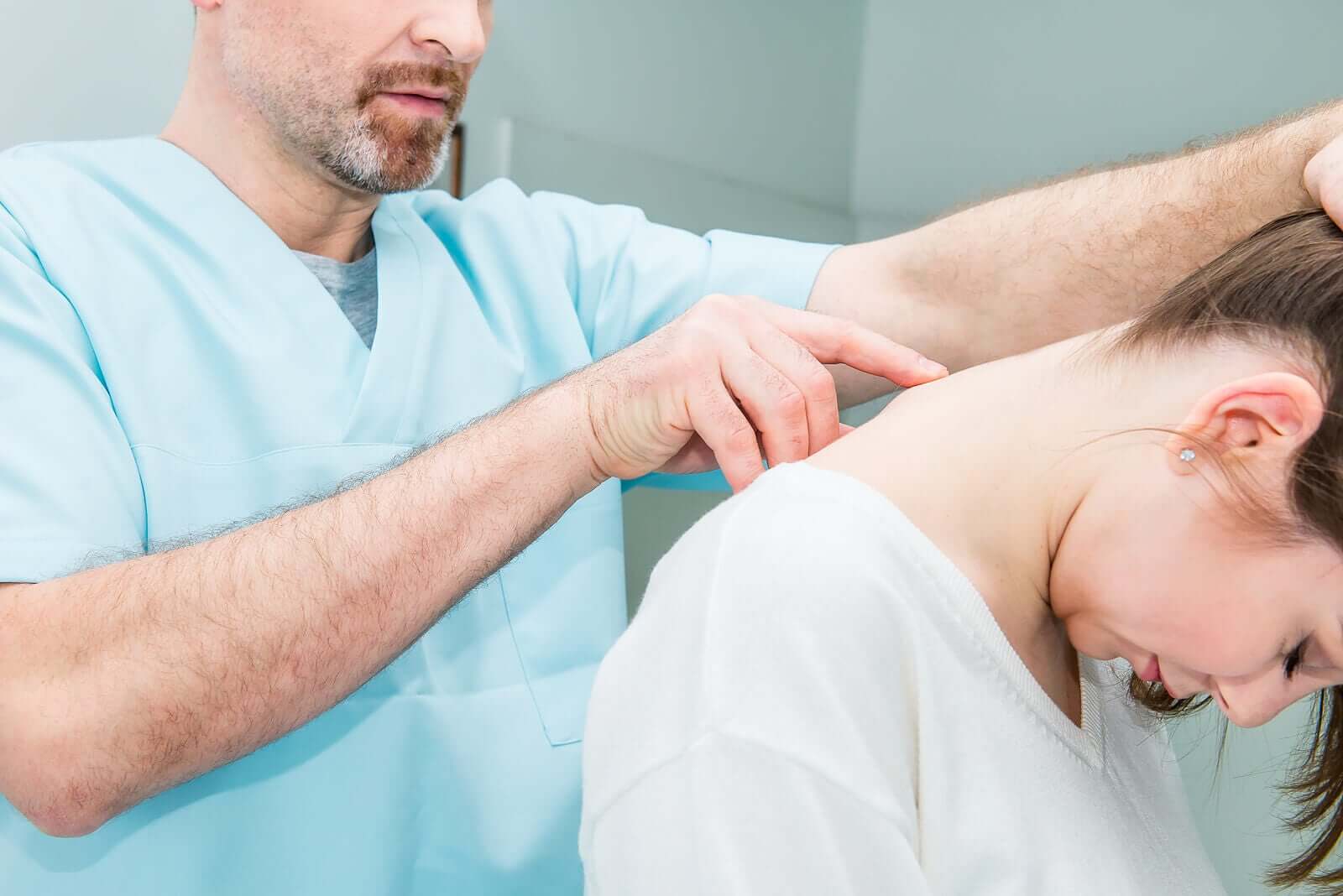What Is Disc Desiccation and How to Treat It?

Disc desiccation is a medical condition characterized by dehydration of the intervertebral discs. These make up a soft and flexible tissue located between the vertebrae, which are the bony structures that form the spine.
Some conditions can cause these discs to lose their composition and elasticity, causing symptoms of varying severity. If left untreated, some patients may develop complications, such as herniated discs. Keep reading to learn more!
What are the symptoms of disc desiccation?
The clinical manifestations of disc desiccation are varied and nonspecific. This means that they can be present in many diseases, so the diagnosis may take some time.
As it affects the intervertebral discs, the most frequent symptoms are joint stiffness, lower back pain of mild to moderate intensity and abnormal sensations (tingling). These may appear episodically over a prolonged period of time.
If this degenerative condition progresses, a disc herniation may occur. This health issue is characterized by intense pain originating in the spine, which usually extends to the lower limbs, making walking difficult.

Discover: Exercises for Scoliosis of the Spine
Main causes
Disc desiccation occurs when the fluids that form part of the tissue of the intervertebral discs drain away. These fluids help to acquire the necessary elasticity to support the movements of the spine.
Advancing age is the main characteristic that triggers this degenerative disease. It’s an expected event and is related to the appearance of osteoarthritis, a more common issue.
On the other hand, there are risk factors that increase the probability of suffering a disc desiccation:
- Having suffered multiple trauma to the spine – something that’s common in athletes.
- Constantly lifting heavy objects. Typical of certain work activities.
How can disc desiccation be diagnosed?
The physician can use the patient’s medical history and imaging studies to make a diagnosis. The first aspect includes a personal or family history of spinal problems, in addition to the characteristics of the symptoms experienced.
Imaging studies establish the definitive diagnosis. Some of the most commonly used are the following:
- Simple spine X-ray: This is a cheap method that emits little radiation, but the technique may limit the quality.
- Computed tomography: This allows multiple images of the spine to be obtained, although the appreciation of the soft tissues (such as the intervertebral discs) isn’t as good.
- Nuclear magnetic resonance: This is the most common method to show signs of desiccation and disc herniation. It has the advantages of offering better image quality and not emitting radiation, in spite of being the most expensive on this list. A multidisciplinary team that may include radiologists, traumatologists and neurosurgeons perform the diagnosis depending on the case.
Available treatments
This depends very much on the clinical severity of the patient and their particular conditions. Initially, doctors recommend basic measures aimed at preventing the onset of symptoms, such as improving posture and maintaining a healthy lifestyle.
The physician may prescribe drugs to relieve pain, especially non-steroidal anti-inflammatory drugs (NSAIDs) such as diclofenac or ibuprofen. If these don’t work, there are other medications, such as opioids, although their use is largely reserved for severe cases.
Physical therapy is a valid and common option that requires the participation of physiotherapists, especially when there are other associated disabilities. Finally, there are surgical interventions whose indication may be limited, considering the advanced age of many patients with disc desiccation.
Discover: The Common Classification of Painkillers
Can I prevent disc desiccation?
Avoiding direct trauma and maintaining healthy lifestyle habits during youth and adulthood are the best methods to prevent cases of disc desiccation. The latter include the following:
- Don’t smoke or reduce tobacco consumption. According to review studies, this habit is linked to a higher incidence of spinal issues.
- Exercise regularly, and always with adequate stretching.
- Follow a healthy diet and good hydration. Don’t forget that excess weight and obesity increase the risk of suffering disc desiccation.
- Despite prolonged compliance with the above recommendations, some patients are likely to develop the disease. You must see a doctor early on, when the first symptoms appear.

When to go to the doctor
If symptoms occur on a regular basis, you must plan a medical consultation as soon as possible. The best specialist is the neurosurgeon, although an evaluation in the primary care sector may be necessary.
Things not to forget in order to make the best use of the visit to the doctor are the following:
- Remember as accurately as possible how the symptoms first occurred.
- Notify them if you have any drug allergy.
- Investigate to see if any person in the immediate family has suffered from spinal diseases.
- And, finally, bring laboratory studies or medical reports.
Disc desiccation: a preventable and treatable issue
Although multiple factors influence its onset, you can manage disc desiccation correctly if you treat it early on. This reduces the likelihood of developing complications, such as herniated discs.
All cited sources were thoroughly reviewed by our team to ensure their quality, reliability, currency, and validity. The bibliography of this article was considered reliable and of academic or scientific accuracy.
- Boleaga-Durán B. Conceptos básicos de la enfermedad lumbar degenerativa. Anales de Radiología de México 2007;1:51-56.
- Morales V, et al. Lesión degenerativa en operados de patología discal. Estudio histológico. Rev Latinoamer Patol Clin 2012;59(1):8-15.
- Hanley E. Lumbar arthrodesis for the treatment of back pain. JBJS 1999;81(5).
- Vicente Vega, Carlos. “Revisión sistemática de la evidencia actual respecto al tratamiento fisioterápico en la discopatía cervical degenerativa.” (2020).
This text is provided for informational purposes only and does not replace consultation with a professional. If in doubt, consult your specialist.









